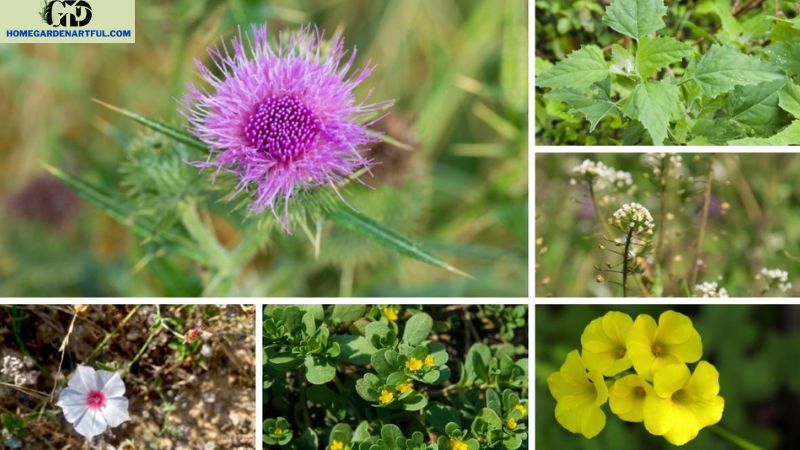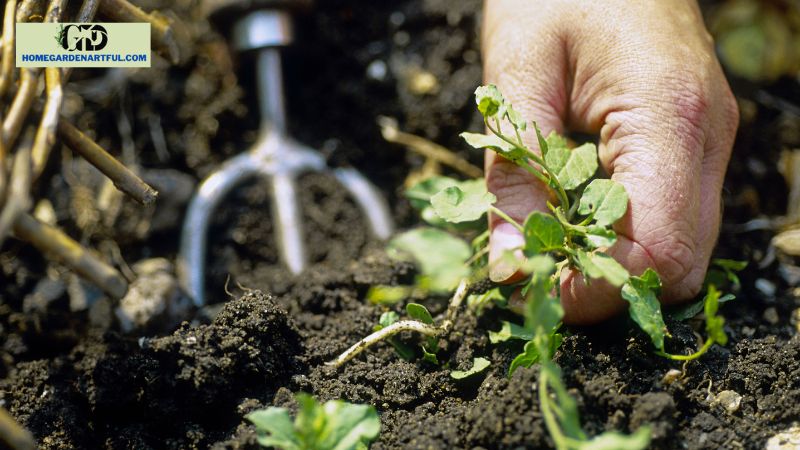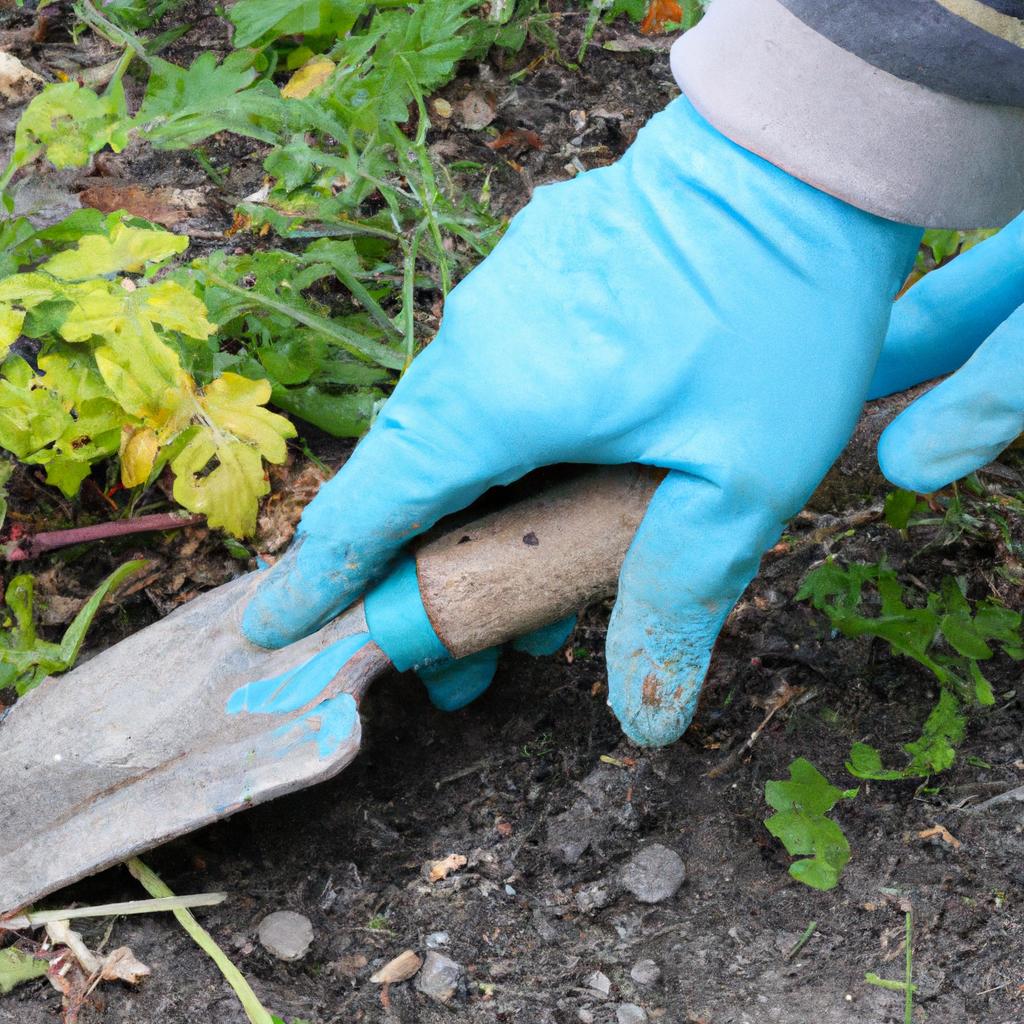We all dream of flourishing vegetable gardens, bursting with vibrant colors and bountiful harvests. However, the reality can be disheartening when weeds start to take over. Don’t fret! In this comprehensive guide, homegardenartful will show you How to Clear a Vegetable Garden Full of Weeds, step by step. Together, we will tackle the challenges and create a weed-free haven for your beloved plants.
Introduction
Maintaining a weed-free vegetable garden is crucial for the overall health and productivity of your plants. Weeds compete for vital nutrients, sunlight, and water, hindering the growth of your vegetables. By clearing your garden of weeds, you give your plants the best chance to thrive and maximize their yield.
However, dealing with a vegetable garden full of weeds can be overwhelming. It’s easy to feel discouraged and wonder where to begin. But fear not! With the right approach and a little perseverance, you can regain control over your garden and create an environment where your vegetables can flourish.
In the following sections, I will guide you through the process of clearing your vegetable garden from weeds, sharing effective techniques and helpful tips along the way. From understanding the types of weeds to preventing their regrowth, I’ve got you covered. So, let’s roll up our sleeves and embark on this weed-clearing adventure together!
Are you ready to revitalize your vegetable garden and bid farewell to those pesky weeds? Let’s dive into the first step: understanding the types of weeds that may have invaded your garden sanctuary.
Understanding the Types of Weeds

Differentiating between common weed varieties
Before embarking on your weed-clearing journey, it’s essential to familiarize yourself with the different types of weeds that may have taken root in your vegetable garden. By understanding their characteristics, you can develop targeted strategies to combat them effectively.
Weeds can be broadly categorized as broadleaf weeds or grassy weeds. Broadleaf weeds, such as dandelions and purslane, have broad leaves and often produce colorful flowers. On the other hand, grassy weeds, like crabgrass and Bermuda grass, have narrow leaves and resemble the grass you may have intentionally planted in your garden.
Identifying specific weeds in your vegetable garden
To effectively tackle the weeds in your vegetable garden, it’s crucial to identify the specific weeds that have infiltrated your space. Take a closer look at the characteristics of the weeds present to determine the most appropriate removal methods.
Start by examining the leaves, stems, and flowers of the weeds. Note their color, shape, and texture. Some common weeds you may encounter include:
1. Dandelion (Taraxacum officinale)
- Recognizable by its bright yellow flowers and fluffy seed heads.
- Deep taproots make it challenging to remove entirely.
2. Crabgrass (Digitaria spp.)
- Low-growing grassy weed with wide leaf blades.
- Spreads rapidly and competes with your vegetable plants for nutrients.
3. Purslane (Portulaca oleracea)
- Succulent-like leaves with a reddish stem.
- Tolerates drought conditions and can smother nearby plants.
By identifying the specific weeds in your garden, you can tailor your approach to effectively tackle each type. Remember, knowledge is power when it comes to weed removal. Armed with this understanding, you are now ready to move on to the next section: preparing for weed removal.
Stay tuned for Section 3, where we will discuss the essential preparations you need to make before diving into the weed-clearing process.
Preparing for Weed Removal
Before diving into the process of clearing your vegetable garden from weeds, it’s important to prepare yourself and gather the necessary tools. By doing so, you’ll ensure a smooth and efficient weed removal process, while also safeguarding your well-being.
3.1 Gathering Essential Gardening Tools
To effectively clear your vegetable garden of weeds, you’ll need a few essential gardening tools at your disposal. Here are some tools that will come in handy:
– Garden Gloves:
Protect your hands from thorns, prickly weeds, and potential irritants by wearing sturdy garden gloves. They provide a barrier between your skin and any harmful substances you may encounter during the weed removal process.
– Garden Fork or Hand Trowel:
A garden fork or hand trowel is invaluable for loosening the soil around weeds and extracting them along with their roots. Choose a tool that feels comfortable in your hand and suits the size of your garden.
– Weed Puller or Weeder:
Investing in a weed puller or weeder will make the process of removing larger weeds easier. These tools are designed to grip the weed at its base and allow you to extract it cleanly from the soil.
– Garden Hoe:
A garden hoe is useful for clearing larger areas of weeds. It can be used to slice through the soil and sever the weeds’ roots, minimizing their chances of regrowth.
3.2 Ensuring Personal Protection During the Process
While clearing your vegetable garden of weeds, it’s crucial to prioritize your safety. Here are some measures to consider:
– Protective Clothing:
Wear long-sleeved shirts, long pants, and closed-toe shoes to protect your skin from potential scratches, bites, or contact with harmful plants.
– Sun Protection:
Apply sunscreen, wear a wide-brimmed hat, and consider using sunglasses to shield yourself from the sun’s harmful rays, especially during outdoor weed removal sessions.
– Hydration:
Stay hydrated by keeping a water bottle nearby. Weed removal can be physically demanding, so it’s important to replenish fluids regularly.
– Proper Lifting Techniques:
When lifting heavy objects or bending down to remove weeds, remember to use proper lifting techniques to avoid strain or injury to your back.
By preparing yourself with the necessary tools and taking appropriate safety precautions, you’re now equipped to embark on your weed-clearing journey. In the next section, we’ll delve into the step-by-step process of clearing your vegetable garden from weeds.
Clearing the Vegetable Garden
Now that we have a good understanding of the types of weeds in our vegetable garden, it’s time to roll up our sleeves and get to work. Follow this step-by-step guide to effectively clear your garden of weeds and restore its natural beauty.

A. Removing large and visible weeds manually
Begin by identifying and removing the large and visible weeds that stand out in your garden. Use gloves and a sturdy gardening tool, such as a trowel or garden fork, to loosen the soil around the base of the weed. Grasp the weed firmly at its base and gently pull it out, ensuring you remove the entire root system. Be careful not to disturb the surrounding vegetable plants.
B. Properly disposing of the extracted weeds
Once you’ve extracted the weeds, it’s crucial to dispose of them properly to prevent reinfestation. Avoid adding them to your compost pile, as some weeds may still produce seeds that can spread. Instead, place them in a bag and dispose of them in your local green waste bin or municipal composting facility.
C. Clearing smaller weeds using appropriate tools
Next, turn your attention to the smaller weeds that may have infiltrated your garden. To efficiently clear these weeds, consider using a handheld weeding tool, such as a hoe or hand cultivator. With gentle strokes, loosen the soil around the base of the weeds and remove them from the ground. Take care not to disturb the surrounding vegetable plants while doing so.
D. Addressing weed roots and underground growth
Weeds can have extensive root systems that thrive underground, ready to resurface and cause havoc. To prevent regrowth, thoroughly inspect the soil for any remaining weed roots or underground growth. Use a cultivator or garden fork to carefully dig around the area, removing any hidden weeds and their roots. This step is crucial to ensure long-term weed control in your vegetable garden.
By following these steps, you’ll be well on your way to clearing your vegetable garden of weeds. Remember to be patient and thorough, as even the tiniest remnants left behind can lead to future weed problems. Now that we’ve tackled the clearing process, let’s move on to the next section: preventing weed regrowth.
Preventing Weed Regrowth
A weed-free garden is not just a one-time accomplishment; it requires ongoing maintenance to keep those pesky intruders at bay. By implementing preventive measures, you can maintain a weed-free environment and ensure the continued health and productivity of your vegetable garden. Let’s explore some effective strategies to prevent weed regrowth.
A. Mulching Techniques to Suppress Weed Growth
Mulching is a fantastic ally in the fight against weeds. By applying a layer of organic mulch, such as straw, wood chips, or compost, you create a physical barrier that inhibits weed germination and growth. Mulch also helps retain soil moisture, regulate temperature, and improve overall soil health.
To effectively use mulch in your vegetable garden, follow these steps:
- Clear the garden of existing weeds before applying mulch.
- Apply a layer of mulch around your vegetable plants, ensuring a thickness of 2-3 inches.
- Leave a small gap around the base of each plant to prevent moisture-related issues.
- Regularly inspect the mulch layer and replenish as needed to maintain its thickness and weed-suppressing properties.
B. Proper Spacing and Maintenance of Vegetable Plants
Proper spacing and maintenance of your vegetable plants play a crucial role in preventing weed growth. When plants are adequately spaced, they receive ample air circulation and sunlight, reducing the likelihood of weeds taking hold. Additionally, well-maintained plants have stronger growth, leaving less room for weed establishment.
Consider the following tips for spacing and maintaining your vegetable plants:
- Follow recommended spacing guidelines for each type of vegetable to allow for optimal growth and airflow.
- Regularly weed around your plants to remove any potential weed competition.
- Monitor for signs of nutrient deficiencies or pest infestations, as weakened plants are more susceptible to weed encroachment.
- Prune and stake your plants to promote upward growth and prevent sprawling, which can create weed-friendly hiding spots.
C. Regularly Inspecting and Addressing Potential Weed Sources
Vigilance is key when it comes to maintaining a weed-free garden. Regularly inspect your garden for any signs of emerging weeds or potential weed sources. Addressing these sources promptly will prevent weeds from spreading and taking root.
Take the following steps to stay ahead of weed growth:
- Routinely inspect your garden beds, pathways, and surrounding areas for weed seedlings or mature weeds.
- Remove any weeds immediately, ensuring you remove their roots to prevent regrowth.
- Keep an eye out for weed-prone areas, such as bare patches or areas with poor soil coverage, and address them promptly.
- Avoid introducing weed-infested soil or compost into your garden, as this can introduce new weed seeds.
By implementing these preventive measures, you can maintain a weed-free garden and provide your vegetable plants with the best conditions for growth and productivity. Let’s move on to the conclusion, where we’ll summarize the importance of clearing a vegetable garden from weeds and the steps we’ve covered.
Conclusion
In conclusion, clearing a vegetable garden full of weeds requires patience, diligence, and the right techniques. By following the step-by-step process outlined in this guide, you can effectively reclaim your garden and create an environment where your vegetables can thrive.
Remember, maintaining a weed-free garden is an ongoing process. Regular inspection, timely removal, and preventive measures are key to preventing weed regrowth and ensuring the health and productivity of your vegetable plants.
So, don’t let the weeds overshadow your gardening dreams. Take control of your vegetable garden and enjoy the rewards of a lush, thriving space. With a little effort and the knowledge gained from this guide, you can turn your weed-infested garden into a flourishing haven of fresh produce.
Now, armed with the knowledge and techniques shared here, it’s time to put them into action. Start clearing those weeds today and witness the transformation of your vegetable garden. Happy gardening!
“Weeds are like uninvited guests in your garden. Clear them out, and watch your vegetables shine.” – Unknown


